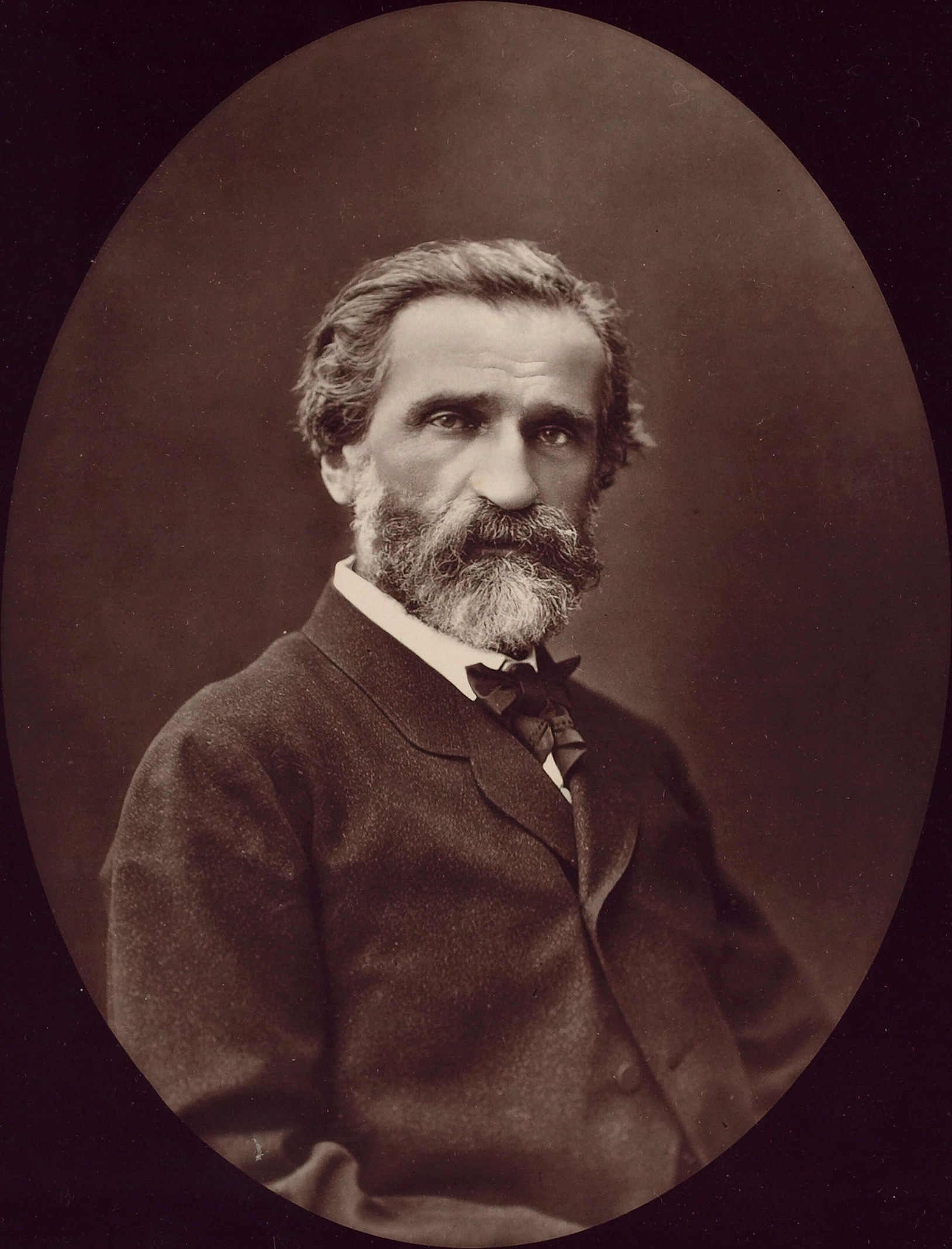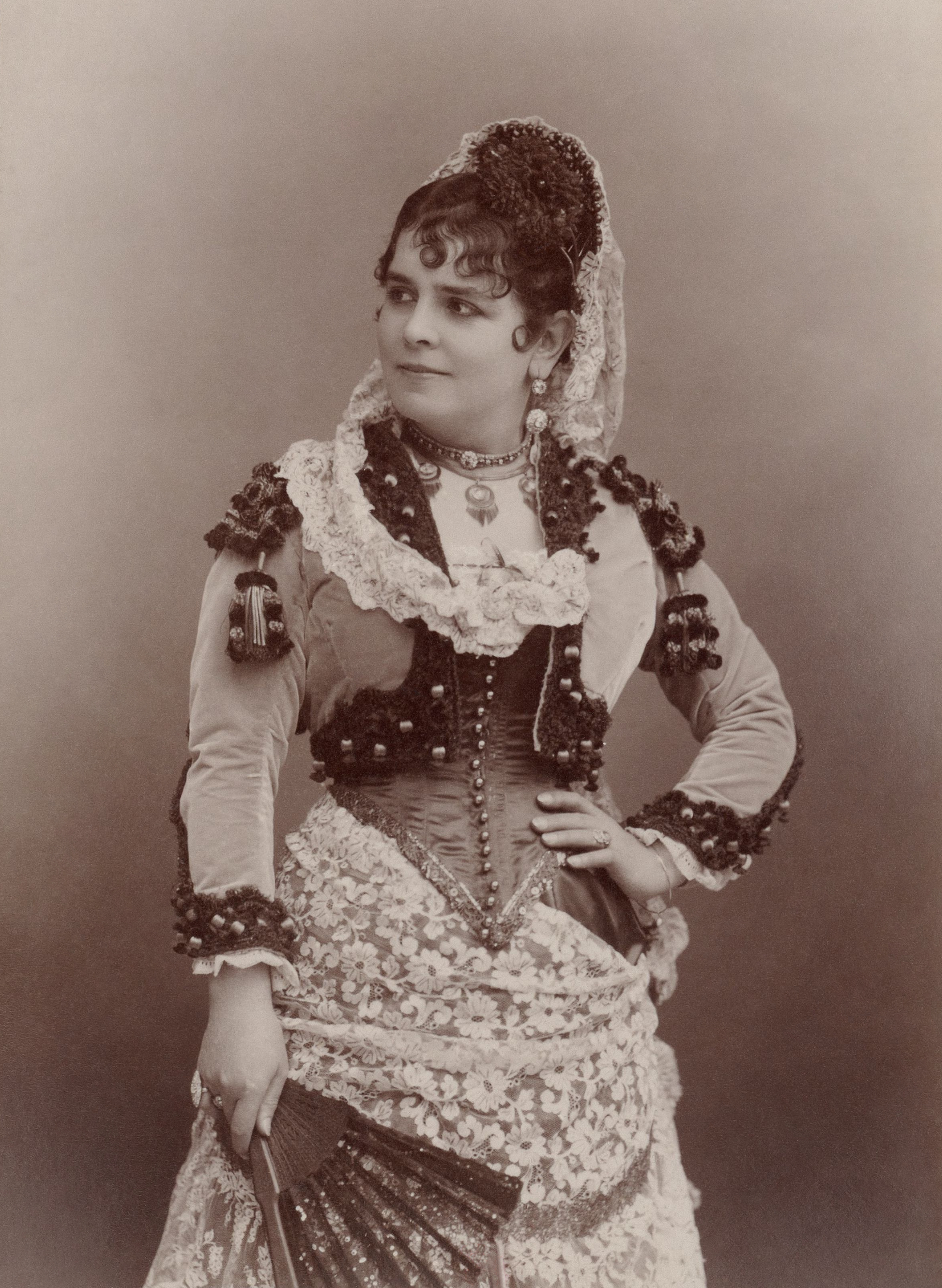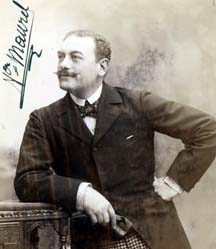 |
Ramón Vinay
Ramón Vinay (August 31, 1911 – January 4, 1996) was a famous Chilean operatic tenor with a powerful, dramatic voice. He is probably best remembered for his appearances in the title role of Giuseppe Verdi's tragic opera ''Otello''. Biography He started his operatic career as a baritone in Mexico in 1938. He later switched to tenor, making a second debut in 1943 and forging a successful international career after World War II. Vinay eventually returned to the baritone fold in 1962 and retired from the stage in 1969. Even as a tenor, however, his vocal timbre retained its dark, baritonal colouration. He was the son of Jean Vinay Robert and Rosa Sepúlveda. Born in Chillán, Chile, Vinay earned particular renown throughout the operatic world for his interpretation of the role of Otello. For a time, he made the part his own. Perhaps his most significant appearance as Otello occurred in 1947, in a radio broadcast of the opera under the baton of Arturo Toscanini. His colleagues on ... [...More Info...] [...Related Items...] OR: [Wikipedia] [Google] [Baidu] |
 |
Ramón Vinay
Ramón Vinay (August 31, 1911 – January 4, 1996) was a famous Chilean operatic tenor with a powerful, dramatic voice. He is probably best remembered for his appearances in the title role of Giuseppe Verdi's tragic opera ''Otello''. Biography He started his operatic career as a baritone in Mexico in 1938. He later switched to tenor, making a second debut in 1943 and forging a successful international career after World War II. Vinay eventually returned to the baritone fold in 1962 and retired from the stage in 1969. Even as a tenor, however, his vocal timbre retained its dark, baritonal colouration. He was the son of Jean Vinay Robert and Rosa Sepúlveda. Born in Chillán, Chile, Vinay earned particular renown throughout the operatic world for his interpretation of the role of Otello. For a time, he made the part his own. Perhaps his most significant appearance as Otello occurred in 1947, in a radio broadcast of the opera under the baton of Arturo Toscanini. His colleagues on ... [...More Info...] [...Related Items...] OR: [Wikipedia] [Google] [Baidu] |
 |
Royal Opera House
The Royal Opera House (ROH) is an opera house and major performing arts venue in Covent Garden, central London. The large building is often referred to as simply Covent Garden, after a previous use of the site. It is the home of The Royal Opera, The Royal Ballet, and the Orchestra of the Royal Opera House. The first theatre on the site, the Theatre Royal (1732), served primarily as a playhouse for the first hundred years of its history. In 1734, the first ballet was presented. A year later, the first season of operas, by George Frideric Handel, began. Many of his operas and oratorios were specifically written for Covent Garden and had their premieres there. The current building is the third theatre on the site, following disastrous fires in 1808 and 1856 to previous buildings. The façade, foyer, and auditorium date from 1858, but almost every other element of the present complex dates from an extensive reconstruction in the 1990s. The main auditorium seats 2,256 people ... [...More Info...] [...Related Items...] OR: [Wikipedia] [Google] [Baidu] |
 |
Oklahoma
Oklahoma (; Choctaw language, Choctaw: ; chr, ᎣᎧᎳᎰᎹ, ''Okalahoma'' ) is a U.S. state, state in the South Central United States, South Central region of the United States, bordered by Texas on the south and west, Kansas on the north, Missouri on the northeast, Arkansas on the east, New Mexico on the west, and Colorado on the northwest. Partially in the western extreme of the Upland South, it is the List of U.S. states and territories by area, 20th-most extensive and the List of U.S. states and territories by population, 28th-most populous of the 50 United States. Its residents are known as Oklahomans and its capital and largest city is Oklahoma City. The state's name is derived from the Choctaw language, Choctaw words , 'people' and , which translates as 'red'. Oklahoma is also known informally by its List of U.S. state and territory nicknames, nickname, "Sooners, The Sooner State", in reference to the settlers who staked their claims on land before the official op ... [...More Info...] [...Related Items...] OR: [Wikipedia] [Google] [Baidu] |
|
Delta Omicron
Delta Omicron () is a co-ed international professional music honors fraternity whose mission is to promote and support excellence in music and musicianship. History Delta Omicron International Music Fraternity was founded on September 6, 1909 at the Cincinnati Conservatory of Music by three undergraduate students: Hazel Wilson, Lorena Creamer, and Mabel Dunn. Additional charter members included Mae Chenoweth, Grace Hudson, and Adah H. Appell. The Articles of Incorporation were signed by the charter members on December 8, 1909 and filed in the office of the Secretary of State of Ohio. The charter was granted on December 13, 1909. In 1923, this date was established as "Founders Day" since not all collegiate institutions at which chapters were installed had opened for the fall semester by September 6. Originally called "Delta Omicron Sorority," the organization changed its name to "Delta Omicron Fraternity" in 1947 since "fraternity" was the preferred name in Panhellenic circles ... [...More Info...] [...Related Items...] OR: [Wikipedia] [Google] [Baidu] |
|
 |
Don Carlos
''Don Carlos'' is a five-act grand opera composed by Giuseppe Verdi to a French-language libretto by Joseph Méry and Camille du Locle, based on the dramatic play '' Don Carlos, Infant von Spanien'' (''Don Carlos, Infante of Spain'') by Friedrich Schiller. In addition, several incidents, of which the Forest of Fontainebleau scene and '' auto-da-fé'' were the most substantial, were borrowed from Eugène Cormon's 1846 play ''Philippe II, Roi d'Espagne''. The opera is most often performed in Italian translation, usually under the title ''Don Carlo''. The opera's story is based on conflicts in the life of Carlos, Prince of Asturias (1545–1568). Though he was betrothed to Elisabeth of Valois, part of the peace treaty ending the Italian War of 1551–59 between the Houses of Habsburg and Valois demanded that she be married instead to his father Philip II of Spain. It was commissioned and produced by the Théâtre Impérial de l'Opéra (Paris Opera) and given its premiere a ... [...More Info...] [...Related Items...] OR: [Wikipedia] [Google] [Baidu] |
 |
Samson Et Dalila
''Samson and Delilah'' (french: Samson et Dalila, links=no), Op. 47, is a grand opera in three acts and four scenes by Camille Saint-Saëns to a French libretto by Ferdinand Lemaire. It was first performed in Weimar at the (Grand Ducal) Theater (now the Staatskapelle Weimar) on 2 December 1877 in a German translation. The opera is based on the Biblical tale of Samson and Delilah found in Chapter 16 of the Book of Judges in the Old Testament. It is the only opera by Saint-Saëns that is regularly performed. The second act love scene in Delilah's tent is one of the set pieces that define French opera. Two of Delilah's arias are particularly well known: "" ("Spring begins") and "" ("My heart opens itself to your voice", also known as "Softly awakes my heart"), the latter of which is one of the most popular recital pieces in the mezzo-soprano/contralto repertoire. Composition history In the middle of the 19th century, a revival of interest in choral music swept France, an ... [...More Info...] [...Related Items...] OR: [Wikipedia] [Google] [Baidu] |
 |
Camille Saint-Saëns
Charles-Camille Saint-Saëns (; 9 October 183516 December 1921) was a French composer, organist, conductor and pianist of the Romantic era. His best-known works include Introduction and Rondo Capriccioso (1863), the Second Piano Concerto (1868), the First Cello Concerto (1872), ''Danse macabre'' (1874), the opera ''Samson and Delilah'' (1877), the Third Violin Concerto (1880), the Third ("Organ") Symphony (1886) and ''The Carnival of the Animals'' (1886). Saint-Saëns was a musical prodigy; he made his concert debut at the age of ten. After studying at the Paris Conservatoire he followed a conventional career as a church organist, first at Saint-Merri, Paris and, from 1858, La Madeleine, the official church of the French Empire. After leaving the post twenty years later, he was a successful freelance pianist and composer, in demand in Europe and the Americas. As a young man, Saint-Saëns was enthusiastic for the most modern music of the day, particularly that of Schum ... [...More Info...] [...Related Items...] OR: [Wikipedia] [Google] [Baidu] |
 |
Carmen
''Carmen'' () is an opera in four acts by the French composer Georges Bizet. The libretto was written by Henri Meilhac and Ludovic Halévy, based on the novella of the same title by Prosper Mérimée. The opera was first performed by the Opéra-Comique in Paris on 3 March 1875, where its breaking of conventions shocked and scandalised its first audiences. Bizet died suddenly after the 33rd performance, unaware that the work would achieve international acclaim within the following ten years. ''Carmen'' has since become one of the most popular and frequently performed operas in the classical canon; the " Habanera" from act 1 and the "Toreador Song" from act 2 are among the best known of all operatic arias. The opera is written in the genre of ''opéra comique'' with musical numbers separated by dialogue. It is set in southern Spain and tells the story of the downfall of Don José, a naïve soldier who is seduced by the wiles of the fiery gypsy Carmen. José abandons his childho ... [...More Info...] [...Related Items...] OR: [Wikipedia] [Google] [Baidu] |
 |
Bizet
Georges Bizet (; 25 October 18383 June 1875) was a French composer of the Romantic era. Best known for his operas in a career cut short by his early death, Bizet achieved few successes before his final work, ''Carmen'', which has become one of the most popular and frequently performed works in the entire opera repertoire. During a brilliant student career at the Conservatoire de Paris, Bizet won many prizes, including the prestigious Prix de Rome in 1857. He was recognised as an outstanding pianist, though he chose not to capitalise on this skill and rarely performed in public. Returning to Paris after almost three years in Italy, he found that the main Parisian opera theatres preferred the established classical repertoire to the works of newcomers. His keyboard and orchestral compositions were likewise largely ignored; as a result, his career stalled, and he earned his living mainly by arranging and transcribing the music of others. Restless for success, he began many thea ... [...More Info...] [...Related Items...] OR: [Wikipedia] [Google] [Baidu] |
 |
Pagliacci
''Pagliacci'' (; literal translation, "Clowns") is an Italian opera in a prologue and two acts, with music and libretto by Ruggero Leoncavallo. The opera tells the tale of Canio, actor and leader of a commedia dell'arte theatrical company, who murders his wife Nedda and her lover Silvio on stage during a performance. ''Pagliacci'' premiered at the Teatro Dal Verme in Milan on 21 May 1892, conducted by Arturo Toscanini, with Adelina Stehle as Nedda, Fiorello Giraud as Canio, Victor Maurel as Tonio, and Mario Ancona as Silvio. Soon after its Italian premiere, the opera played in London (with Nellie Melba as Nedda) and in New York (on 15 June 1893, with Agostino Montegriffo as Canio). ''Pagliacci'' is the composer's only opera that is still widely performed. ''Pagliacci'' is often staged with '' Cavalleria rusticana'' by Pietro Mascagni, a double bill known colloquially as "Cav and Pag". Origin and disputes Leoncavallo was a little-known composer when Pietro Mascagni's '' Cav ... [...More Info...] [...Related Items...] OR: [Wikipedia] [Google] [Baidu] |
|
Leoncavallo
Ruggero (or Ruggiero) Leoncavallo ( , , ; 23 April 18579 August 1919) was an Italian opera composer and librettist. Although he produced numerous operas and other songs throughout his career it is his opera ''Pagliacci'' (1892) that remained his lasting contribution, despite attempts to escape the shadow of his greatest success. Today he remains largely known for ''Pagliacci'', one of the most popular and frequently performed works in the opera repertory. His other compositions include the song " Mattinata", popularized by Enrico Caruso, and the symphonic poem ''La Nuit de mai''. Biography The son of Vincenzo Leoncavallo, a police magistrate and judge, Leoncavallo was born in Naples on 23 April 1857. As a child, Leoncavallo moved with his father to the town of Montalto Uffugo in Calabria, where he lived during his adolescence. He later returned to Naples and was educated at the city's San Pietro a Majella Conservatory and later the University of Bologna studying literatur ... [...More Info...] [...Related Items...] OR: [Wikipedia] [Google] [Baidu] |
|
 |
Bayreuth Festival
The Bayreuth Festival (german: link=no, Bayreuther Festspiele) is a music festival held annually in Bayreuth, Germany, at which performances of operas by the 19th-century German composer Richard Wagner are presented. Wagner himself conceived and promoted the idea of a special festival to showcase his own works, in particular his monumental cycle and ''Parsifal''. Performances take place in a specially designed theatre, the Bayreuth Festspielhaus. Wagner personally supervised the design and construction of the theatre, which contained many architectural innovations to accommodate the huge orchestras for which Wagner wrote as well as the composer's particular vision about the staging of his works. The Festival has become a pilgrimage destination for Wagnerians and classical-music enthusiasts. Origins The origins of the Festival itself lie rooted in Richard Wagner's interest in establishing his financial independence. A souring of the relationship with his patron, Ludwig II ... [...More Info...] [...Related Items...] OR: [Wikipedia] [Google] [Baidu] |